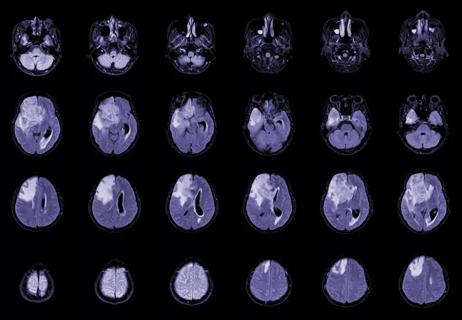Researchers discuss new data on breast cancer treatment

Leading researchers and thought leaders gathered in April at a Cleveland Clinic symposium to share vital information on new approaches to breast cancer detection and treatment. The seminar, “Cleveland Breast Cancer 2015 Collaborating for a Cure”, included discussion of promising data on treatment of HER2-positive and ER-positive advanced and metastatic disease, as well as new study results about protecting against ovarian failure in chemotherapy. Other important topics included usage of new breast cancer diagnostic techniques such as tomosynthesis, and new approaches in radiation therapy including intraoperative radiation therapy.
Cleveland Clinic is a non-profit academic medical center. Advertising on our site helps support our mission. We do not endorse non-Cleveland Clinic products or services. Policy
“We brought the best minds and leading breast cancer doctors and researchers in the world together to discuss important advances in breast cancer management,” said Jame Abraham, MD, FACP, Cleveland Clinic’s Director of Breast Medical Oncology and Co-Director of the Comprehensive Breast Cancer Program. Dr. Abraham was the symposium’s co-director along with Stephen R. Grobmyer, MD, FACS, Cleveland Clinic’s Chief of Surgical Oncology and Breast Services and Co-Director of the Comprehensive Breast Cancer Program.
“It was exciting for us to hear about the treatments that are now significantly extending survival for women with breast cancer, particularly those with advanced or metastatic HER2-positive or ER-positive breast cancer,” Dr. Abraham said.
The seminar included lectures, discussion and a cadaver lab, enabling participants to learn from each other, Dr. Grobmyer said. “In this kind of seminar, we gain knowledge that prepares us to provide the best care for our breast cancer patients.” In addition to new breast cancer treatments, the seminar provided perspective on the new breast cancer detection and screening technology, tomosynthesis.
Seminar participants were also able to learn about the newest research on intraoperative radiotherapy for breast cancer. Stephanie Valente, DO, discussed results from a large multicenter research study on intraoperative radiation therapy for breast cancer, performed at 19 North American medical centers and led by Cleveland Clinic. The research was presented at the latest annual meeting of the Society of Surgical Oncology. “The benefits of intraoperative radiation therapy for breast cancer are numerous, including a shorter time frame for treatment, fewer overall side effects and more rapid recovery,” Dr. Grobmyer said.
“The issue of fertility is particularly important for younger women with breast cancer,” said Dr. Abraham. “They have long-term survivorship issues, so hearing about new studies on fertility preservation is crucial to those of us who treat young women with breast cancer.”

Timing and type of side effects differ greatly from chemotherapy

Dedicated multidisciplinary teams support 84 ultra-rare cancers

Sessions explore treatment advances and multidisciplinary care

New research from Cleveland Clinic helps explain why these tumors are so refractory to treatment, and suggests new therapeutic avenues

Combination of olaparib and carboplatin results in complete durable response for a patient with BRCA2 and “BRCAness” mutations

Early communication between oncologists and ophthalmologist warranted

Case-based course delves into latest treatment approaches

Long-term relationship building and engagement key to gaining community trust